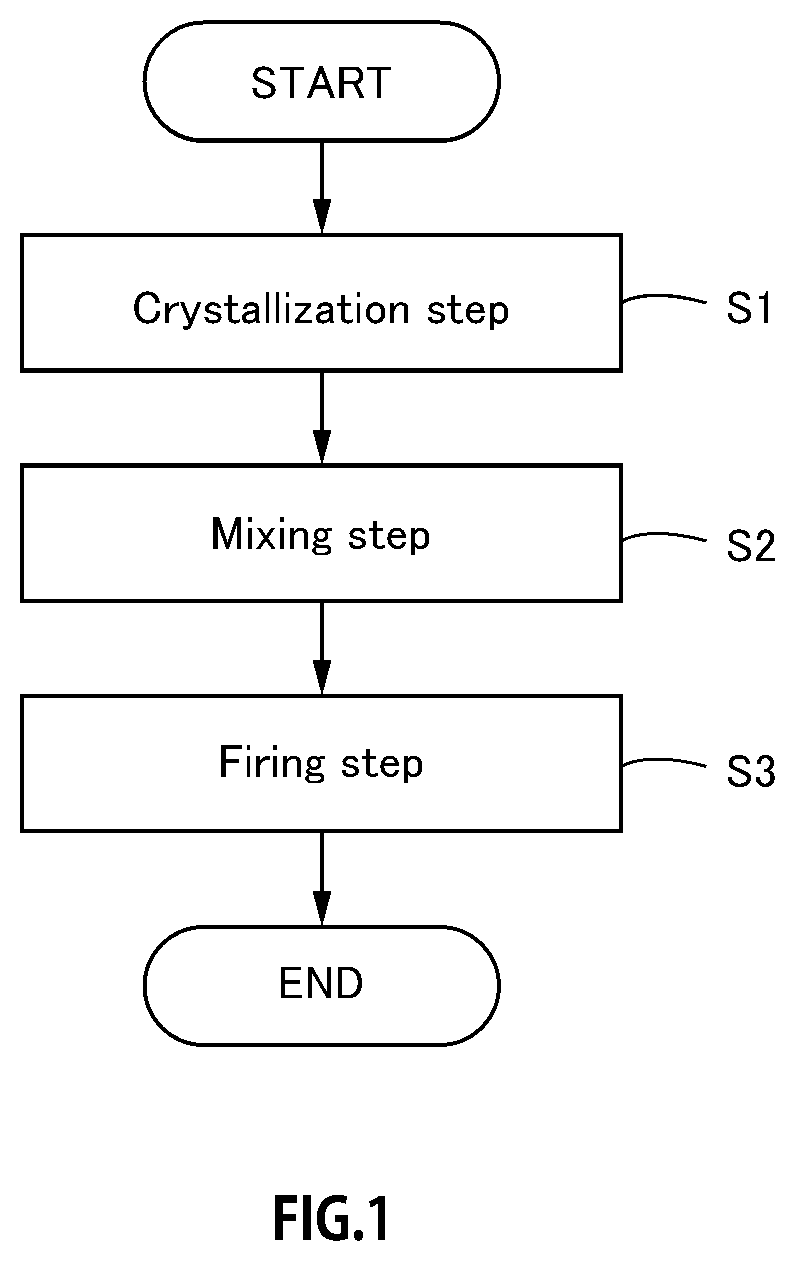Positive electrode active material for non-aqueous electrolyte secondary battery, process for manufacturing positive electrode active material for non-aqueous electrolyte secondary battery, and non-aqueous electrolyte secondary battery using the positive electrode active material
- Summary
- Abstract
- Description
- Claims
- Application Information
AI Technical Summary
Benefits of technology
Problems solved by technology
Method used
Image
Examples
example 1
[0091]In example 1, a transition metal composite hydroxide powder represented by Ni0.35Co0.35Mn0.30(OH)2+α (wherein 0≤α0.4) was obtained by a publicly known technology including a nucleation step for performing nucleation by adjusting pH value on the basis of a liquid temperature of 25° C. of a reaction aqueous solution to a range of 12.0 to 14.0, and a particle growth step for growing nuclei by controlling pH value on the basis of a liquid temperature of 25° C. of a reaction aqueous solution containing nuclei obtained in the nucleation step to be lower than pH value of the nucleation step, and also, to be in a range of 10.5 to 12.0 (Crystallization step S1).
[0092]A lithium mixture was obtained by sufficiently mixing the transition metal composite hydroxide powder, a compound containing an element E, and lithium carbonate using a shaker mixer device (TURBULA Type T2C made by Willy A. Bachofen AG) (Mixing step S2). Here, magnesium oxide was selected as the compound containing the ele...
examples 2 to 8
, Comparative Examples 1 to 3
[0097]In examples 2 to 8 and comparative examples 1 to 3, positive electrode active materials were obtained and evaluated as similar as the example 1, except that types and addition amount of the added compound containing the element E have been changed as indicated in the table 1. In addition, an evaluation value of an amount of eluted metal and negative electrode resistance is illustrated in the table 1.
[0098]In addition, in the positive electrode active material obtained by the examples 2 to 8 and comparative examples 2 to 3, it was confirmed that the element E (Mg, Al, Si) exists at a surface of at least either of the primary particles and the secondary particles, by observation by a scanning electron microscope. As the element E was fired in an oxidizing atmosphere respectively, it is considered that the element E exists in a form of oxide at a surface of at least either of the primary particles and the secondary particles.
TABLE 1Negative electrodeA...
PUM
 Login to View More
Login to View More Abstract
Description
Claims
Application Information
 Login to View More
Login to View More - R&D
- Intellectual Property
- Life Sciences
- Materials
- Tech Scout
- Unparalleled Data Quality
- Higher Quality Content
- 60% Fewer Hallucinations
Browse by: Latest US Patents, China's latest patents, Technical Efficacy Thesaurus, Application Domain, Technology Topic, Popular Technical Reports.
© 2025 PatSnap. All rights reserved.Legal|Privacy policy|Modern Slavery Act Transparency Statement|Sitemap|About US| Contact US: help@patsnap.com


